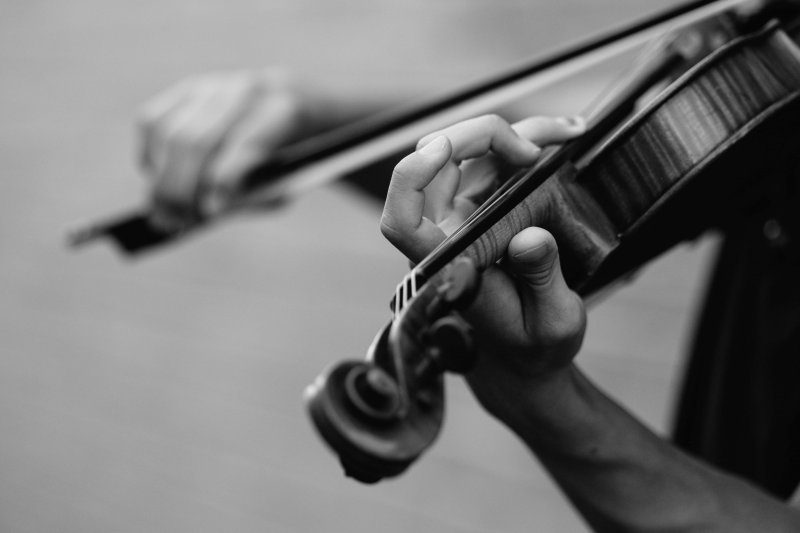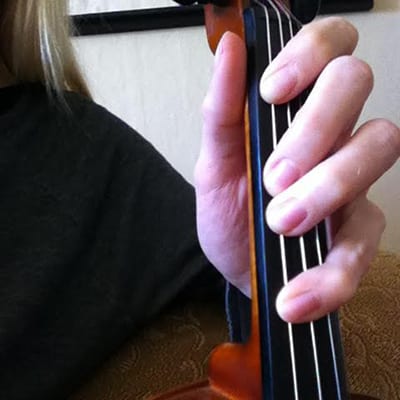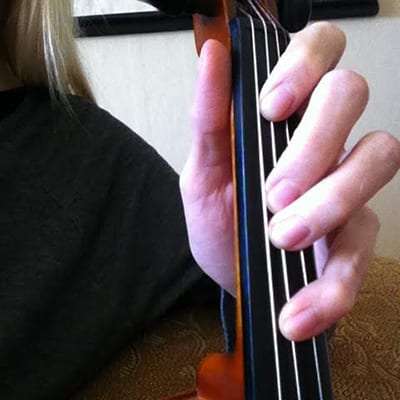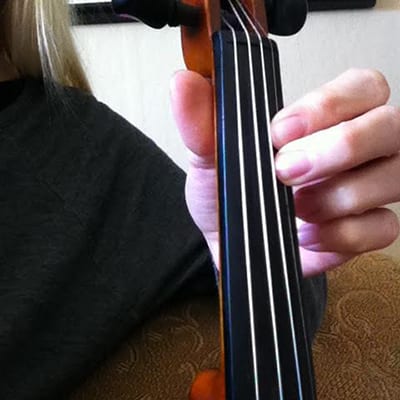 One of the most important aspects when learning how to play the violin is understanding scales. Learning violin scales will give you a solid foundation as you begin to explore new pieces of music.
One of the most important aspects when learning how to play the violin is understanding scales. Learning violin scales will give you a solid foundation as you begin to explore new pieces of music.
Today, we’ll take a look at how to play the most essential scale, the G major, with tips and videos.
What are Violin Scales?
Simply put, a violin scale is a series of notes, ordered by frequency or pitch, that span an octave (a consecutive set of eight notes.) Each scale is accompanied by a set of naturals, sharps, and flats, which determine what type of scale it is. There are many different types of violin scales: major, natural minor, harmonic minor, etc. but as a beginner, the first type of scale to focus on and master is the major scale.
There’s an easy way to determine which notes go into a major scale, and if you can memorize this rule, you’ll be able to figure out any major scale based on these two principles:
- There are half steps between the third and fourth, and seventh and eighth notes in the scale.
- There are whole steps between all of the other notes in the scale.
To play whole steps, leave about an inch between your fingers (for instance E and F# on the D string). To play half steps, squeeze your fingers together, so they touch each other (B and C natural on the A string.) If you’re not sure about some of the aspects of violin finger placement, take a look at these violin fingering charts.
How to Play G Major Scale
G Major scale is the easiest to learn for beginners of all violin scales, so let’s start there.
Follow the principles above and identify your fingers with these numbers:
- Index finger
- Middle finger
- Ring finger
- Pinkie
For the G major scale, use the following finger pattern:
G string: 2 and 3 touching (half steps) with all other fingers spaced apart (whole steps).

D string: 2 and 3 touching (half step) with all other fingers spaced apart (whole steps)

If you want to go into a two-octave scale and make the exercise a little longer and more challenging (highly recommended), allow the scale to span from the lowest G (Open G string) to the next G (3rd finger on the D string). Then, expand and play all the notes leading up to the next G (second finger on the E string). This makes the scale twice as long.
Start over with the counting of the third and seventh notes, and continue the following finger pattern:
A string: 1 and 2 touching (half step) with all other fingers spaced apart (whole steps).

E string: 1 and 2 touching (half step) with all other fingers spaced apart (whole steps).

Once you have this fingering pattern memorized, take note of the set of sharps, naturals, and flats that make up this scale. This set is what we call a key. In the case of the G major scale, follow the principles above, which gives you an F#. Leave all of the other notes natural.
The set sharps, naturals, and flats would then change for each scale you play. For instance, the A major scale would contain C#, F#, and G#, and the D major scale would use F# and C#.
The best approach when learning violin scales is to memorize both the set of sharps, flats, and naturals, and the fingering pattern for each scale.
Violin Scales Warm-Ups for Beginners
Here is a valuable warm-up routine to help you learn violin scales. They use the two-octave G major scale you just learned. Practice this routine to turn on your musical mind, get your fingers moving, and get your bow arm flowing before each practice session. This warm-up will also help you focus on your intonation and form and explore different bow areas.
Follow the outline below as you play your two-octave G major scale:
- Half notes (long, slow, smooth bows that span from frog to tip)
- Quarter notes (quick, strong bows that span most of the bow)
- Four per note eight notes (four quick bow strokes on each note)
- Two per note eight notes (two quick bow strokes on each note)
- One per note eight notes (one quick bow stroke on note)
- Four per note 16th notes (four ultra-quick bow strokes on each note)
- Two per note 16th (two ultra-quick bow strokes on each note)
- One per note 16th notes (four quick bow strokes on each note)
Let’s Practice!
Grab your violin and practice along with me in these videos.
This video will walk you through this violin scale warm-up. Once you get comfortable with the warm-up, you can try it for yourself.
Take some time to grasp the warm-up section leading up to the eighth notes. Depending on how long you’ve been playing violin, you may need to practice for a few weeks.
Once you’re ready, try playing along with the 16th-note routine outlined in this video:
Learn to play this warm-up proficiently (all notes in tune, and you can work smoothly and seamlessly from half notes to 16th notes) before moving on to another scale.
Work your way up gradually and play through your eighth notes and 16th notes slowly until you can add speed without taking away from the overall quality of your sound and intonation. When you first start learning the scale, you may need to work through the warm-up multiple times during your practice sessions.
Enjoy Learning Violin Scales for Beginners!
Now that you’ve learned the G scale and have an excellent warm-up routine to go with it, take some time to get comfortable: practice and perfect it! Play through your warm-up exercise each time you practice for the next few weeks.
To help you master your skills as you learn how to play violin, try working with a professional tutor! A private tutor can customize lessons just for you and provide help learning the A Major violin scale and more.
Maile Proctor
![The Beginner’s Guide to Violin Scales [With Video Tutorial]](/_next/image?url=https%3A%2F%2Ftakelessons.com%2Fblog%2Fwp-content%2Fuploads%2F2016%2F02%2Fviolin-scales-featured.jpg&w=3840&q=75)